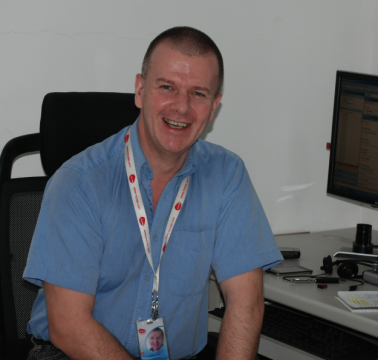The BBC Birmingham Studio Centre was at 282 Broad Street if I recall correctly. When Pebble Mill opened it was left derelict until the 1980’s and then demolished along with the adjoining buildings to make way for the new night life developments along Broad Street. The building was not on the site of the Hyatt Hotel but somewhat further down towards Five Ways.
One Saturday morning during the demolition I went along and asked the foreman if I could take a look and grab a souvenir. Despite the precarious nature of the site (as it was already being obliterated) he cheerfully let me go in – without a hard hat or high-vis jacket either!
I went through the half-timbered glass doors from Broad Street and up the staircase. The whole place was damp and musty and I explored various rooms and areas including what I believe was the former main control room. I managed to salvage a battered little wooden box with two studio warning lights which had presumably been above an entrance to one of the technical areas. It was sad to see the building in such a sorry state. I certainly never expected I would make a similar visit to its successor in the dying days of Pebble Mill.
Philip Morgan
Brian Johnson adds the following comment on the Facebook page: ‘I worked in the TV control room at Broad Street (then called Switching Centre) at the time that BBC 2 was just starting colour transmissions. At that time the Sound Control Room was separate and on a different floor. The two were combined into the Communications Centre when it was all moved to Pebble Mill.’


